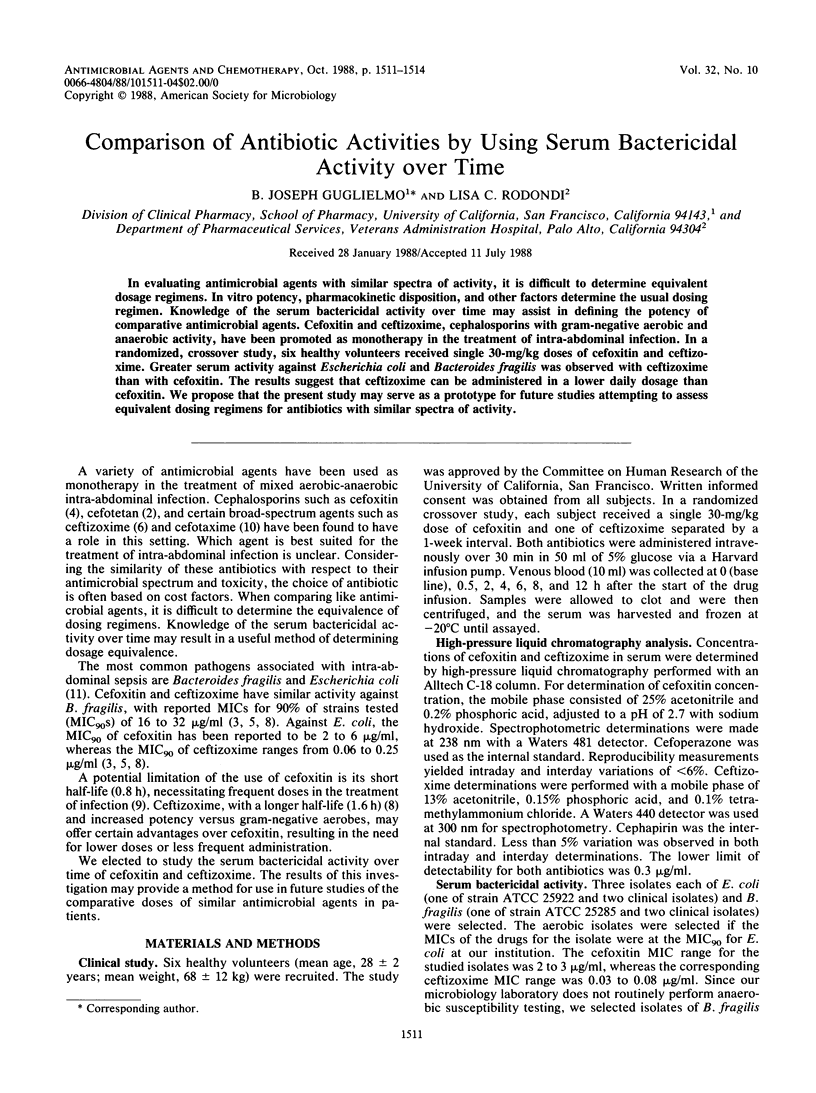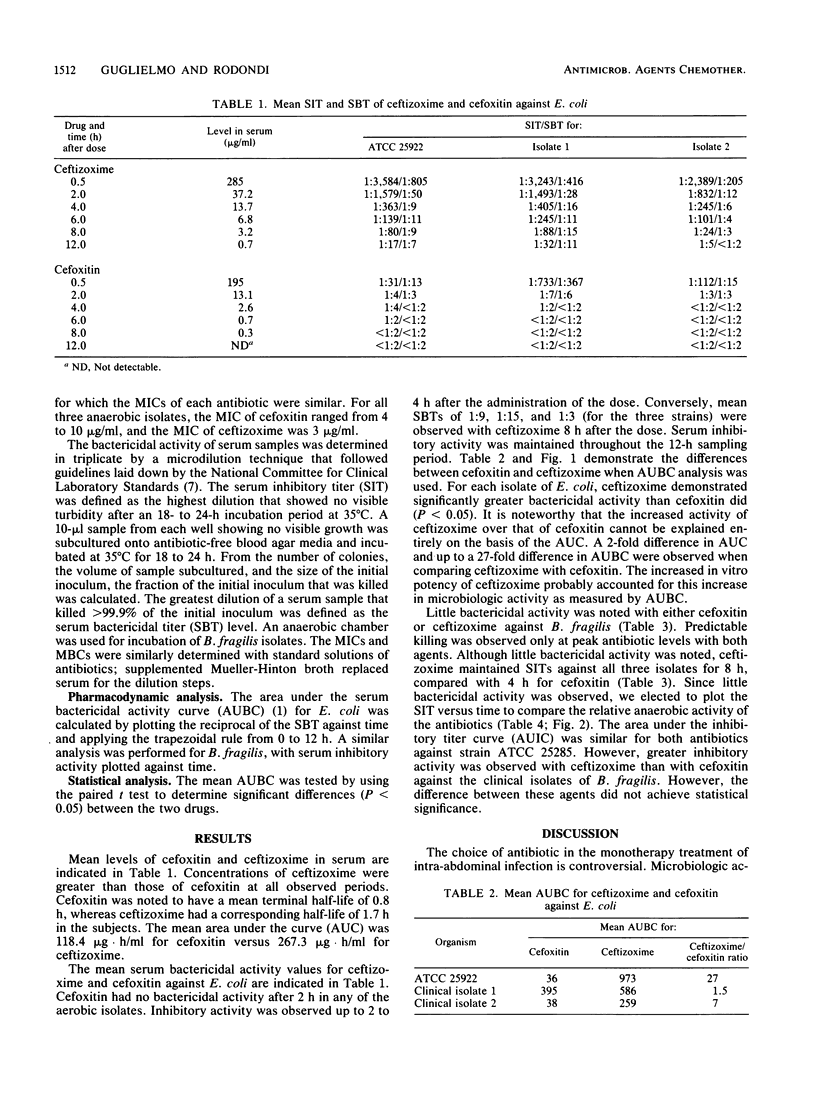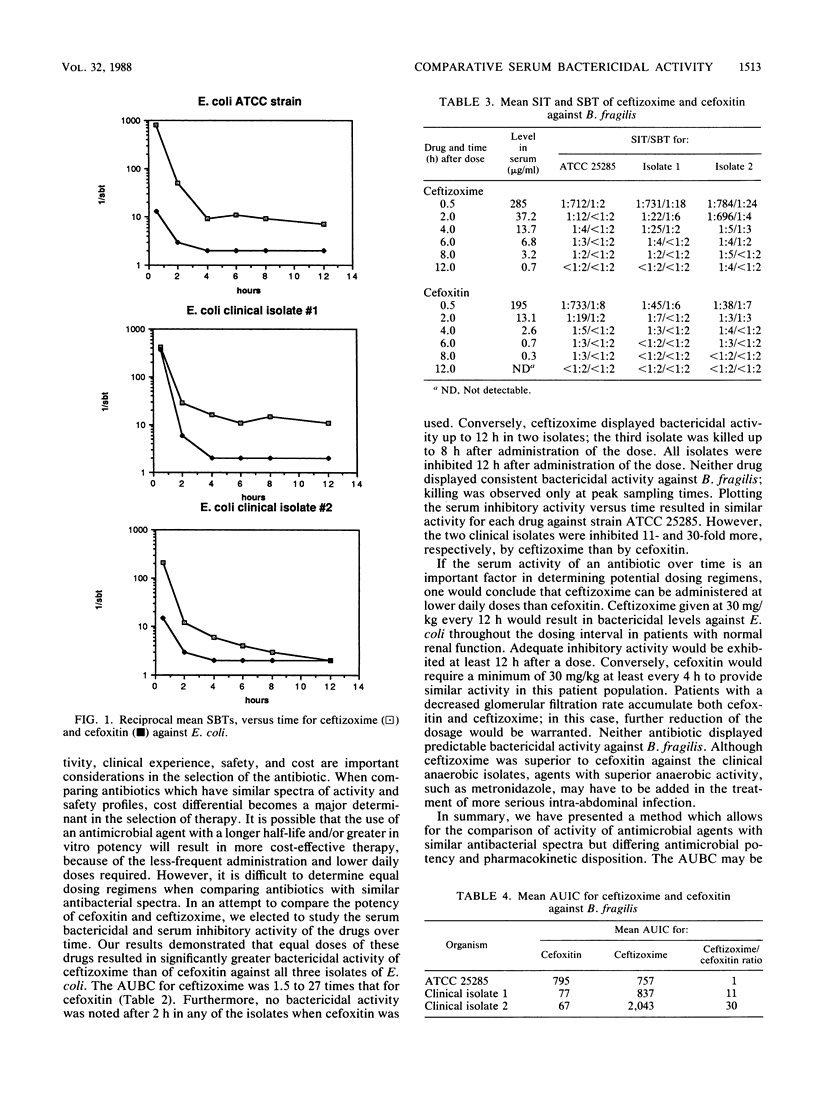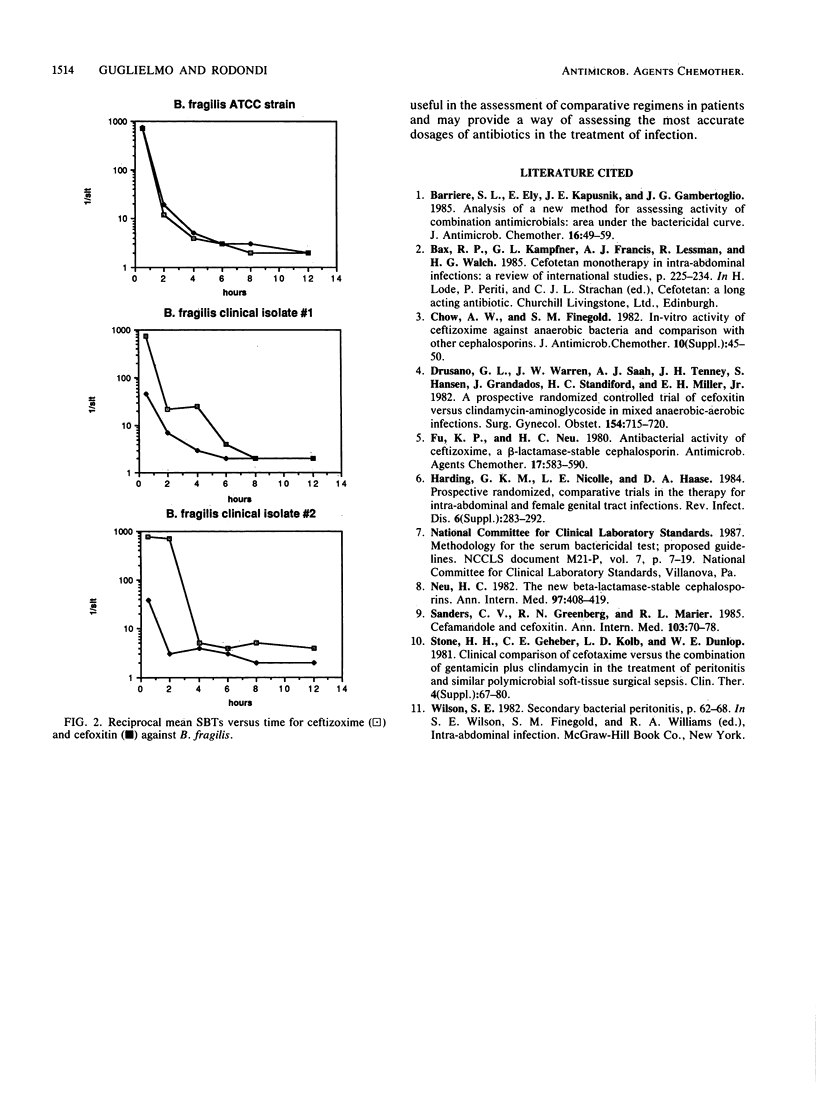Abstract
In evaluating antimicrobial agents with similar spectra of activity, it is difficult to determine equivalent dosage regimens. In vitro potency, pharmacokinetic disposition, and other factors determine the usual dosing regimen. Knowledge of the serum bactericidal activity over time may assist in defining the potency of comparative antimicrobial agents. Cefoxitin and ceftizoxime, cephalosporins with gram-negative aerobic and anaerobic activity, have been promoted as monotherapy in the treatment of intra-abdominal infection. In a randomized, crossover study, six healthy volunteers received single 30-mg/kg doses of cefoxitin and ceftizoxime. Greater serum activity against Escherichia coli and Bacteroides fragilis was observed with ceftizoxime than with cefoxitin. The results suggest that ceftizoxime can be administered in a lower daily dosage than cefoxitin. We propose that the present study may serve as a prototype for future studies attempting to assess equivalent dosing regimens for antibiotics with similar spectra of activity.
Full text
PDF



Selected References
These references are in PubMed. This may not be the complete list of references from this article.
- Barriere S. L., Ely E., Kapusnik J. E., Gambertoglio J. G. Analysis of a new method for assessing activity of combinations of antimicrobials: area under the bactericidal activity curve. J Antimicrob Chemother. 1985 Jul;16(1):49–59. doi: 10.1093/jac/16.1.49. [DOI] [PubMed] [Google Scholar]
- Chow A. W., Finegold S. M. In-vitro activity of ceftizoxime against anaerobic bacteria and comparison with other cephalosporins. J Antimicrob Chemother. 1982 Nov;10 (Suppl 100):45–50. doi: 10.1093/jac/10.suppl_c.45. [DOI] [PubMed] [Google Scholar]
- Drusano G. L., Warren J. W., Saah A. J., Caplan E. S., Tenney J. H., Hansen S., Granados J., Standiford H. C., Miller E. H., Jr A prospective randomized controlled trial of cefoxitin versus clindamycin-aminoglycoside in mixed anaerobic-aerobic infections. Surg Gynecol Obstet. 1982 May;154(5):715–720. [PubMed] [Google Scholar]
- Fu K. P., Neu H. C. Antibacterial activity of ceftizoxime, a beta-lactamase-stable cephalosporin. Antimicrob Agents Chemother. 1980 Apr;17(4):583–590. doi: 10.1128/aac.17.4.583. [DOI] [PMC free article] [PubMed] [Google Scholar]
- Neu H. C. The new beta-lactamase-stable cephalosporins. Ann Intern Med. 1982 Sep;97(3):408–419. doi: 10.7326/0003-4819-97-3-408. [DOI] [PubMed] [Google Scholar]
- Sanders C. V., Greenberg R. N., Marier R. L. Cefamandole and cefoxitin. Ann Intern Med. 1985 Jul;103(1):70–78. doi: 10.7326/0003-4819-103-1-70. [DOI] [PubMed] [Google Scholar]
- Stone H. H., Geheber C. E., Kolb L. D., Dunlop W. E. Clinical comparison of cefotaxime versus the combination of gentamicin plus clindamycin in the treatment of peritonitis and similar polymicrobial soft-tissue surgical sepsis. Clin Ther. 1981;4 (Suppl A):67–80. [PubMed] [Google Scholar]


